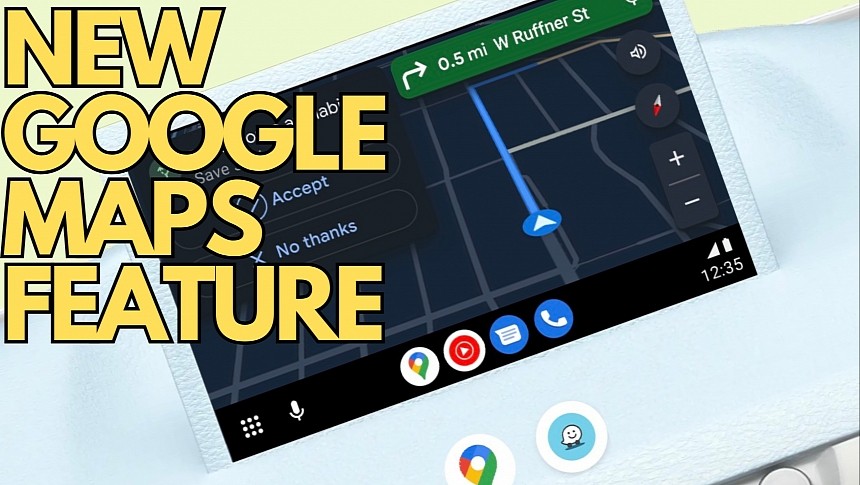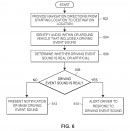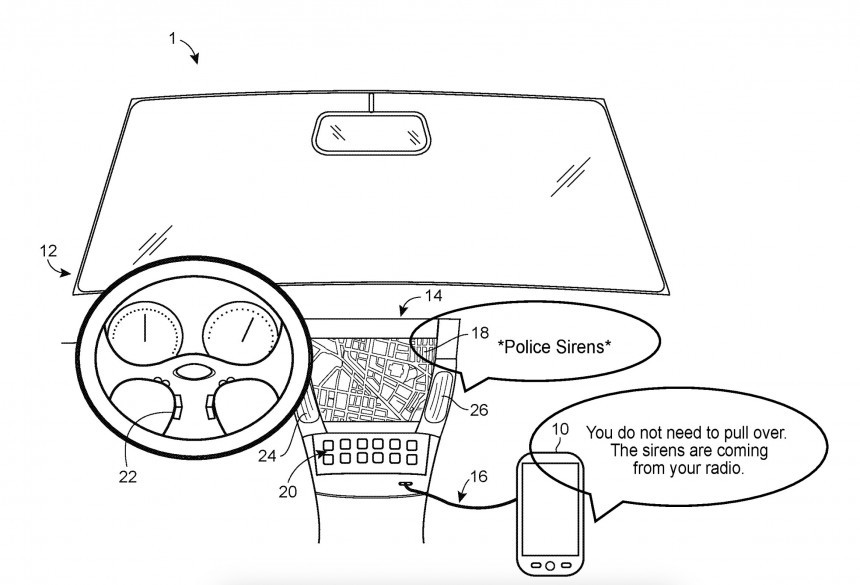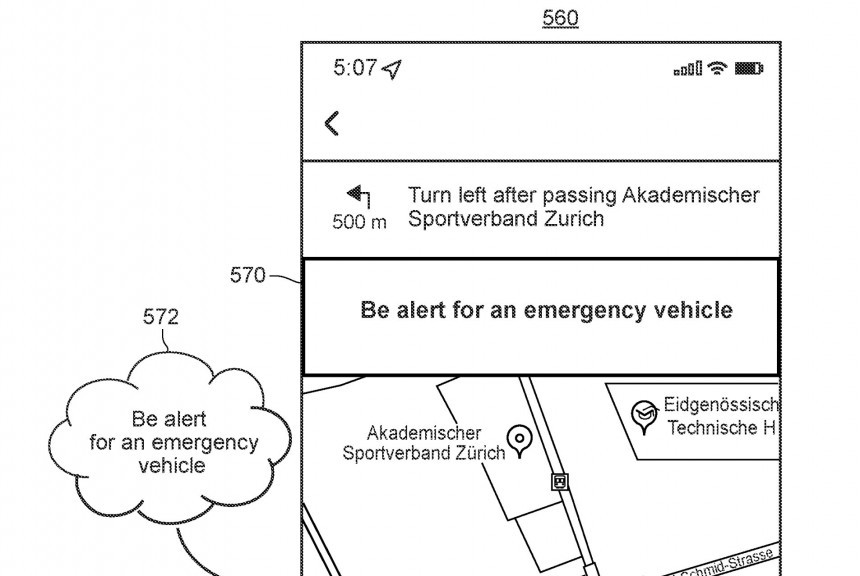Google wants to keep Google Maps at the forefront of navigation innovation, and features like Immersive View for routes are living proof.
Announced earlier this fall, Immersive View for routes provides users a new preview option before they start driving. Immersive View uses satellite imagery, Street View photos, traffic conditions, and the weather forecast to generate a multi-dimensional and realistic route simulation.
Drivers can explore every turn, observe critical details, and get familiar with the route before beginning the journey.
The Mountain View-based search giant has recently patented a new idea aligning with this push for innovation, allowing Google Maps to detect nearby sounds, process them, and then provide useful information to the driver.
The patent is intuitively called "detecting and handling driving event sounds during a navigation session" and describes a new feature that would allow Google Maps to listen to what happens in the cabin and offer additional context.
Google explains that depending on the type of sound the driver hears, they could take the wrong action. For example, emergency vehicle sirens, car horns, or collisions "may deceive the driver into thinking the noises are real." As a result, they could slow down or pull over without a reason, believing the sounds come from outside the car.
However, all these sounds might be produced by the devices in the car. When you listen to music or the radio, the audio could include similar sounds to the one the driver typically hears from outside the vehicle, such as car horns or emergency vehicle sirens.
Google believes Google Maps can analyze the sounds and tell if the sounds are produced by in-cabin devices.
The company explains the feature works when navigation is enabled, with Google Maps listening permanently for so-called driving event sounds. The system can identify audio within or around vehicles and determine whether the sound is real or artificial. If the analysis determines that the sound isn't real, Google Maps can display a notification or even try to mask the driving event sound. If the application believes the sound is real, it alerts the driver to respond to the driving event sound.
Here's what the alerts could look like.
If you drive and the system detects an emergency vehicle siren that could be real, it shows a notification on top of the navigation interface telling you to "be alert for an emergency vehicle." In some cases, you might be advised to clear the road if the system detects the sound in proximity.
If the analysis indicates that the sound is not real, the notification on the screen tells the driver that "the emergency vehicle sound is part of the media stream." If you hear police sirens and are tempted to pull over and clear the road, Google Maps can process the sound and tell you what to do. The application can either advise you to be prepared for an approaching police car or tell you that "you do not need to pull over, the sirens are coming from your radio."
If you wonder how Google Maps can collect such information, it all comes down to the mobile device hardware. The microphone, also used by Google Assistant to allow you to control the app with voice commands, is responsible for listening to driving event sounds and uploading them for in-depth analysis.
Privacy advocates could be concerned that Google Maps could eventually listen to every conversation in the car, and I believe this could be the main shortcoming for the feature to land in the production stage. However, Google explains that only samples related to driving event sounds would be collected, as the system wouldn't be trained to collect conversations happening in the cabin.
Google continuously looks into ways to improve Google Maps, and such a feature would align with its strategy. However, it could take a while until this idea makes its way from the drawing table to the production stage, especially because Google must first make sure everything runs correctly and the analysis offers high accuracy rates. The company can't afford Google Maps to incorrectly process in-cabin noises, as telling a driver to ignore the emergency vehicle sirens when an ambulance is trying to get past them could cause more harm than good.
You can find the full patent in the box after the jump if you're interested in the technical details and learn how Google wants to make it happen.
Meanwhile, Google's rivals play catch-up. Apple has recently updated Apple Maps with offline maps support, a feature Google Maps has been offering for years. The iPhone maker is working around the clock to turn Apple Maps into a more advanced Google Maps rival, and the detailed city experience is a major step in this direction. However, Apple sticks with a painfully slow rollout model, so all its improvements typically become available for users worldwide in stages, sometimes throughout several years.
Drivers can explore every turn, observe critical details, and get familiar with the route before beginning the journey.
The Mountain View-based search giant has recently patented a new idea aligning with this push for innovation, allowing Google Maps to detect nearby sounds, process them, and then provide useful information to the driver.
Google explains that depending on the type of sound the driver hears, they could take the wrong action. For example, emergency vehicle sirens, car horns, or collisions "may deceive the driver into thinking the noises are real." As a result, they could slow down or pull over without a reason, believing the sounds come from outside the car.
However, all these sounds might be produced by the devices in the car. When you listen to music or the radio, the audio could include similar sounds to the one the driver typically hears from outside the vehicle, such as car horns or emergency vehicle sirens.
Google believes Google Maps can analyze the sounds and tell if the sounds are produced by in-cabin devices.
The company explains the feature works when navigation is enabled, with Google Maps listening permanently for so-called driving event sounds. The system can identify audio within or around vehicles and determine whether the sound is real or artificial. If the analysis determines that the sound isn't real, Google Maps can display a notification or even try to mask the driving event sound. If the application believes the sound is real, it alerts the driver to respond to the driving event sound.
Here's what the alerts could look like.
If the analysis indicates that the sound is not real, the notification on the screen tells the driver that "the emergency vehicle sound is part of the media stream." If you hear police sirens and are tempted to pull over and clear the road, Google Maps can process the sound and tell you what to do. The application can either advise you to be prepared for an approaching police car or tell you that "you do not need to pull over, the sirens are coming from your radio."
If you wonder how Google Maps can collect such information, it all comes down to the mobile device hardware. The microphone, also used by Google Assistant to allow you to control the app with voice commands, is responsible for listening to driving event sounds and uploading them for in-depth analysis.
Google continuously looks into ways to improve Google Maps, and such a feature would align with its strategy. However, it could take a while until this idea makes its way from the drawing table to the production stage, especially because Google must first make sure everything runs correctly and the analysis offers high accuracy rates. The company can't afford Google Maps to incorrectly process in-cabin noises, as telling a driver to ignore the emergency vehicle sirens when an ambulance is trying to get past them could cause more harm than good.
You can find the full patent in the box after the jump if you're interested in the technical details and learn how Google wants to make it happen.
Meanwhile, Google's rivals play catch-up. Apple has recently updated Apple Maps with offline maps support, a feature Google Maps has been offering for years. The iPhone maker is working around the clock to turn Apple Maps into a more advanced Google Maps rival, and the detailed city experience is a major step in this direction. However, Apple sticks with a painfully slow rollout model, so all its improvements typically become available for users worldwide in stages, sometimes throughout several years.









